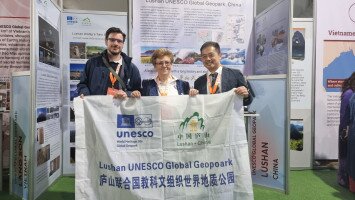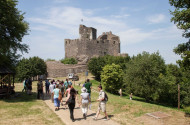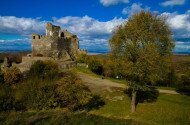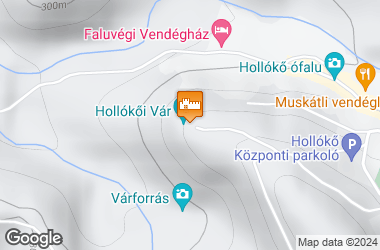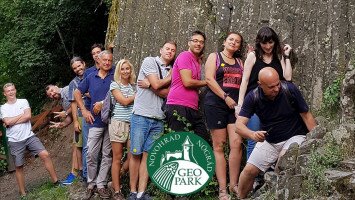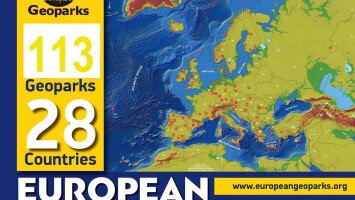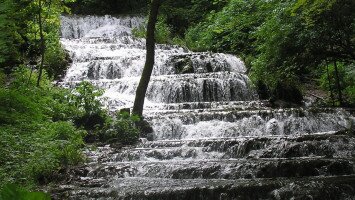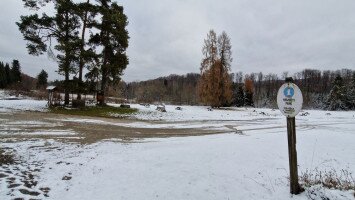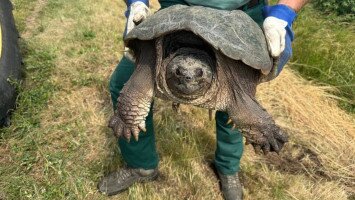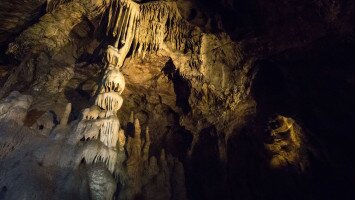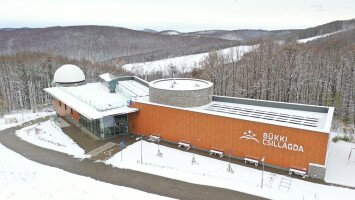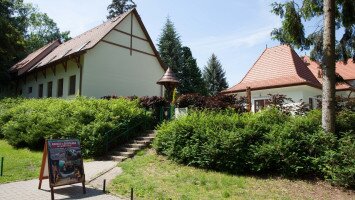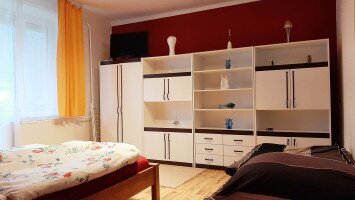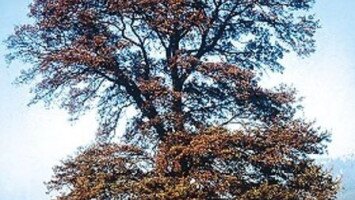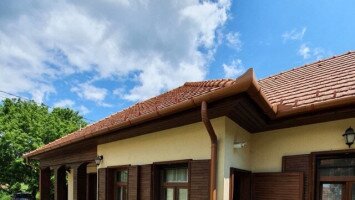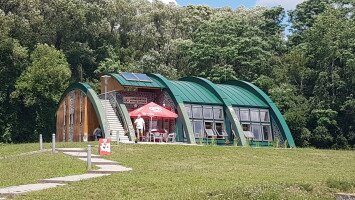The restored medieval castle of Hollókő lies on the edge of a prominent cliff between the Cserhát mountains, near the UNESCO World Heritage Palóc site, on the edge of a rocky outcrop.
History
After the Tartar invasion, the castle of Hollókő began to be built by members of the Illés branch of the Kacsics family on the rock next to the village. The fortress was gradually expanded over the centuries, with walls, bastions, living quarters and cisterns built on what were originally 13th-century walls. During the anarchic internal war that broke out in the early 14th century, they were forced to surrender to the Provincial Lord Mate Csák. In 1313, the country was slowly taken over by the army of King Anjou, who was once again forming a united state, and donated it to Tamás Szécsényi, a beloved of the victorious ruler. In the following centuries, his descendants owned the castle estate at Hollókő. At the beginning of the 15th century the castle (together with Szécsény, Salgó and Csővár) were occupied by the Hussite. János Giskra himself negotiated with the delegates of Hont and Nógrád counties in the castle. In 1455 (in the absence of a son heir) he pledged his fortune,including Hollókő Castle, to László Szécsényi's nephews, Mihály Guthi Országh and Albert Losonczy.
At the end of the 15th century and the beginning of the 16th century, the Losonczys and the Guthis significantly transformed the castle. The complex of pentagonal residential towers and palaces was expanded with the outer castle, where a series of stables and warehouses were located. After the Turkish occupation of Buda Castle in 1541, the fortresses of Nógrád, which the Habsburg military leadership incorporated into the royal fortress system, became increasingly endangered. The garrison stationed between the walls of the castle had the task of preventing the Turkish cavalry troops marching on their robbery portholes from invading the serfs' villages, but because of their small numbers it was difficult to accomplish.
The castles of Nógrád were occupied by Ali the Pasha of Buda in his 1552 campaign. Among them was Hollókő, whose defenders fled from their posts without resistance as the huge army approached. Later in the castle, according to a list of mercenaries from 1556, Mohammed was stationed with twenty-one mercenaries. The royal troops took it back in the fall of 1593 without a cannon shot, as the Turkish mercenaries fled from it. The small fortress, which had lost its military significance, was once again ruled by the Turks for twenty years from 1663 onwards. Later, the Polish troops of King John Sobieski, who were on their way home from the liberation of the city of Vienna, were finally liberated from the power of the "Pagans". In 1711, due to the peace and the difficult financial situation of the country, the entrances and bridges of the castle were demolished with sections of the outer courtyard. Thus the castle avoided its total destruction. In the following centuries, the harsh weather, coupled with demolitions by the locals, severely rubbed its walls. Only the archaeological excavation and restoration between 1966 and 1969 ended its destruction, so at present the castle of Hollókő is the most intact medieval castle in the surrounding area. Since 2003 life has been going on in the castle. Members of the Knighthood of Szent László are waiting for the tourists in medieval clothes. You can try medieval weapons. You will also learn to use the bow, crossbow, thrower, and spear.
Design
The castle, built on a cliff about 400 meters high, was built in irregular shape due to natural conditions. From the air, the castle is like a snail house centered on a pentagonal old tower. Four dwellings were protected here. Later, around 1270, a palace wing was attached to it. Later, the demand for convenience, power and wealth was increased, so a knighthood was needed. Next to it was a chapel erected. In the 15th century new parts of the castle were added: a system reinforced by a wolf pit and a drawbridge protected the upper castle, which in 1552 could not withstand the Turks.
Parts
The castle is 68 meters north-south and 51 meters east-west. There is a height difference of 27.5 meters from the entrance gate to the entrance of the tower. Entering the medieval entrance of the castle starts an ever narrowing, multi-broken entrance wall leading up to the rectangular outer gate tower. The access to the outer courtyard was made more difficult by several successive gates and a wolf pits between them. The cistern outer courtyard was accessible only by the lowered drawbridge. In the outer courtyard there is a rock-cistern 4 meters in diameter. According to the legend, Máté Csák would have hidden his treasures (here), and later the Turks would also collect the abducted gold here. However, many treasure hunters left without success. From the outer courtyard there are two walls leading towards the inner castle gate. One is directly next to the gate leading out of the ramp, and the other entrance at the southeast corner of the inner palace has only one of the soffit planes remaining. This walkway leads to an inner wall passageway that leads to the inner courtyard. In the 16th century this entrance was no longer in use. Pedestrian traffic was transferred to the steeply rising southwest wall wall below. It ended with a triangular watchtower. The terraced outer wall passage with four gates provided access to the inner castle door. Entering the gate of the inner castle, we enter a foreground from which three rooms can be approached. The left door opened to the cellar, the right Gothic entrance led to the southwest wing of the palace. The rocky staircase of the foreground offers access to the courtyard. The inner courtyard was narrowed down in the 16th century and the palace was increased by two more levels. The inner castle is sometimes rested on two meters wide walls by the north and west wings of the "L" palace. They also had access to the ground floor of the tower from the narrowed courtyard, leading to the upper floors via internal stairs. The mass of the tower, completed with a four-story and porthole party, stands out from the rest of the castle. Entering the courtyard, passing through a room, we reach the palace wing above the cellar. It was the Knight's Hall. To the right of the courtyard is the western wing of the palace. At the corner is the inner castle cistern. Climbing up the stairs from the yard, we reach the murderer. Walking along a long staircase, we reach the front door of the tower. The tower is not yet covered, so it is closed. |
